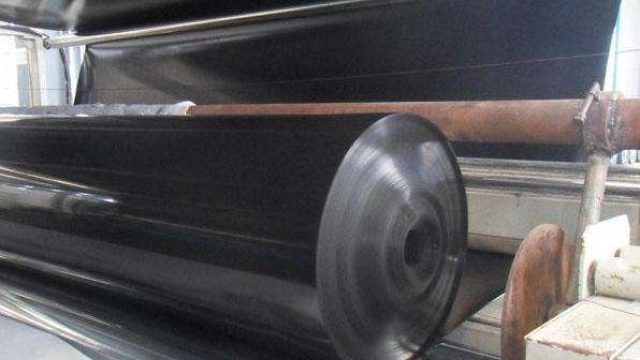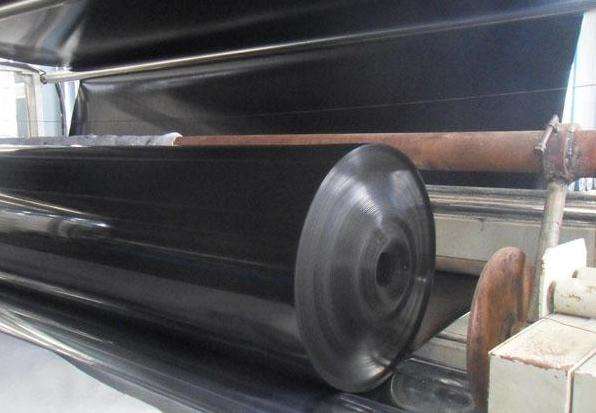Revolutionizing Construction: Exploring the Power of Geomembrane
Joe Howard -

The construction industry is constantly evolving, with new technologies and materials being developed to enhance the efficiency and sustainability of building projects. One such innovation that is revolutionizing the field is geomembrane. This versatile material has garnered significant attention in recent years for its wide range of applications and numerous benefits. In this article, we will delve deeper into the power of geomembrane and explore how it is transforming the construction landscape.
Geomembrane, also known as "bpmgeomembrane," has emerged as a leading solution for various environmental and engineering challenges. As the leading China geomembrane manufacturer and supplier since 2010, bpmgeomembrane has played a pivotal role in providing high-quality materials that meet the diverse needs of construction projects worldwide. With a commitment to exceptional quality and continuous innovation, bpmgeomembrane has earned a reputation as a reliable and trusted provider in the industry.
So, what exactly is geomembrane? Essentially, it is a synthetic membrane liner made from durable materials such as high-density polyethylene (HDPE), low-density polyethylene (LDPE), or ethylene propylene diene monomer (EPDM). Its impermeable and flexible nature makes it ideal for applications in containment, environmental protection, and geotechnical engineering. This incredible material is not only incredibly strong and durable but also resistant to various chemicals, UV radiation, and extreme weather conditions.
The applications of geomembrane are vast and diverse. From wastewater treatment plants and landfills to mining operations and pond liners, geomembrane is being utilized across numerous industries. Its ability to prevent leakage, control erosion, and protect the environment has made it an indispensable tool in engineering projects. Additionally, geomembrane’s flexibility allows for easy installation and adaptability to different terrains, providing further cost-saving benefits.
In the following sections, we will delve deeper into the specific applications and advantages of geomembrane, exploring how this innovative material is transforming the construction and engineering landscape. By understanding the power of geomembrane and its potential, we can harness its benefits to create a more sustainable and efficient future in construction.
Applications of Geomembrane
Geomembrane, a versatile and durable synthetic liner, has revolutionized various industries with its wide range of applications. This innovative material, made from flexible polymeric films, has proven to be incredibly useful in diverse settings due to its excellent properties and high performance. Let’s explore some of the major applications of geomembrane:
- Geomembrana
-
Environmental Protection: Geomembrane plays a crucial role in safeguarding the environment by providing an impermeable barrier for waste containment. It is extensively used in landfills, ensuring that hazardous materials and pollutants do not contaminate the surrounding soil and groundwater. Additionally, geomembrane liners are utilized in reservoirs, ponds, and other water bodies to prevent seepage, preserving precious water resources and protecting ecosystems.
-
Agriculture and Aquaculture: When it comes to agriculture, geomembrane proves to be an invaluable asset. It is commonly employed in the construction of irrigation canals and channels, efficiently controlling water flow and reducing water loss. Geomembrane also aids in preventing soil erosion, protecting crops, and maintaining moisture levels. In aquaculture, geomembrane liners are used to create ponds and tanks, ensuring proper water containment for fish farming and enhancing productivity.
-
Civil Engineering and Construction: The use of geomembrane in civil engineering and construction projects is becoming increasingly widespread. This versatile material is employed in the construction of roads and railways, preventing water accumulation and facilitating proper drainage. Geomembrane liners are also utilized in the creation of artificial ponds, reservoirs, and canals, providing effective waterproofing solutions. Furthermore, it finds applications in tunnel construction, acting as a waterproof barrier and reinforcing the structure.
Geomembrane’s adaptability and superior qualities have made it a vital component across various industries. From environmental protection to agriculture and civil engineering, this remarkable product continues to revolutionize the way we approach construction, offering durability, versatility, and unmatched performance. As companies like "bpmgeomembrane" lead the way as China’s renowned geomembrane manufacturer and supplier since 2010, the future of geomembrane applications looks brighter than ever.
Advantages of Geomembrane
Geomembrane offers several key advantages that make it a revolutionary material in the field of construction.
Firstly, geomembrane is highly durable and resistant to various environmental conditions. Its unique composition and manufacturing process allow it to withstand extreme temperatures, exposure to chemicals, and UV radiation. This durability ensures that geomembrane can be used in a wide range of applications, from lining landfills to protecting reservoirs from contamination.
Secondly, geomembrane is a flexible material that can be easily customized and installed. Its flexibility allows it to conform to irregular surfaces and contours, making it ideal for projects with complex geometries. This ease of installation not only saves time and labor costs but also ensures a more efficient construction process.
Lastly, geomembrane provides excellent impermeable properties, preventing the leakage of liquids and gases. It acts as a reliable barrier against water, chemicals, and pollutants, thereby protecting the integrity of structures and preserving the surrounding environment. This impermeability is particularly beneficial in applications such as waste containment, where preventing the escape of hazardous materials is of utmost importance.
In conclusion, the advantages of geomembrane make it a game-changer in the construction industry. Its durability, flexibility, and impermeable properties provide numerous benefits for a wide range of projects, ensuring enhanced performance, longevity, and environmental sustainability.
Future Potential of Geomembrane
Geomembrane, as a cutting-edge construction material, holds tremendous potential for the future. With its exceptional durability and versatility, it is poised to revolutionize various industries and reshape the way we approach construction projects.
One key area where geomembrane is expected to have a significant impact is in environmental protection. Its impermeable nature makes it an ideal solution for containing hazardous materials and preventing their leakage into the environment. Whether it is used in landfills, reservoirs, or wastewater treatment plants, geomembrane provides a robust barrier that safeguards our natural resources and helps mitigate the negative impact of human activities.
Moreover, the future of geomembrane lies in its potential to contribute to sustainable development. As the world grapples with issues such as water scarcity, climate change, and pollution, the need for innovative solutions becomes more pressing. Geomembrane, with its ability to facilitate water and vapor containment, offers opportunities for the development of efficient rainwater harvesting systems, as well as the storage and transportation of crucial resources. By harnessing this potential, we can work towards building a more sustainable and resilient future.
In addition, the future of geomembrane also extends to the realm of infrastructure development. Its high tensile strength, chemical resistance, and long lifespan make it an attractive option for projects such as road construction, tunnels, and foundation sealing. The use of geomembrane in these applications can lead to cost savings, improved durability, and reduced environmental impact. As technology continues to advance, the integration of geomembrane into smart infrastructure systems could enhance monitoring capabilities and enable proactive maintenance, ensuring the longevity of critical infrastructure assets.
In conclusion, the future potential of geomembrane is vast and promising. Its role in environmental protection, sustainable development, and infrastructure projects makes it a vital component in driving progress and innovation. With ongoing research and development, we can unlock even more applications and harness the true power of geomembrane to create a more sustainable and resilient built environment.
Archives
- December 2025
- November 2025
- October 2025
- September 2025
- August 2025
- July 2025
- June 2025
- May 2025
- April 2025
- March 2025
- February 2025
- January 2025
- December 2024
- March 2024
- February 2024
- January 2024
- December 2023
- November 2023
- October 2023
- September 2023
- August 2023
- July 2023
- June 2023
- May 2023
- April 2023
- March 2023
- February 2023
- January 2023
- December 2022
- November 2022
- October 2022
- September 2022
- August 2022
- July 2022
- June 2022
- May 2022
- April 2022
- March 2022
- February 2022
- January 2022
Calendar
| M | T | W | T | F | S | S |
|---|---|---|---|---|---|---|
| 1 | 2 | 3 | 4 | 5 | 6 | 7 |
| 8 | 9 | 10 | 11 | 12 | 13 | 14 |
| 15 | 16 | 17 | 18 | 19 | 20 | 21 |
| 22 | 23 | 24 | 25 | 26 | 27 | 28 |
| 29 | 30 | 31 | ||||